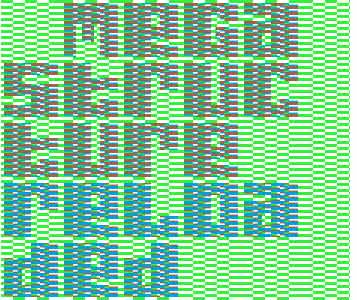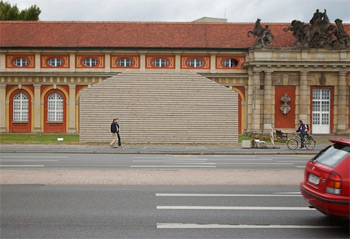IDEAL CITY – INVISIBLE CITIES
SAVE-THE-DATES
Previews:
17 June in Zamosc, Poland
8 Sept. in Potsdam, Germany
www.idealcity-invisiblecities.net/
IDEAL CITY – INVISIBLE CITIES
Tarek Al-Ghoussein, Francis Alys, Carl Andre, Archigram, Colin Ardley, Tim Ayres, Miroslaw Balka, Daniela Brahm, Pedro Cabrita Reis, Rui Calcada Bastos, Constant, Jonas Dahlberg, Tacita Dean, Jaroslaw Flicinski, Carlos Garaicoa, Dan Graham, George Hadjimichalis, Rula Halawani, Franka Hoernschemeyer, Craigie Horsfield, Katarzyna Jozefowicz, Jakob Kolding, Ola Kolehmainen, Lucas Lenglet, Sol LeWitt, David Maljkovic, Gerold Miller, Matthias Mueller, Teresa Murak, Brian OConnell, Daniel Roth, Albrecht Schaefer, Kai Schiemenz, Les Schliesser, Melanie Smith, Monika Sosnowska, David Tremlett, Anton Vidokle, Lawrence Weiner, Tilman Wendland, Krzysztof Zielinski
Curated by Sabrina van der Ley and Markus Richter / European Art Projects
Commissioner: Anda Rottenberg, Adam Mickiewicz Institute
The project is dedicated to one of the outstanding cultural themes: The Ideal City and its sibling the Invisible City. Forty artists comment and reflect on this idea in two European cities, Zamosc, Poland and Potsdam, Germany, which today are still recognisable as ideal city plannings.
Since the renaissance, visual artists have been intensely interested in the concept of the Ideal City, even though most of them remained unrealised, invisible cities. This continues until Constants New Babylon and the projects of the Archigram group in the 1960s. In the last 25 years, however, this idea no longer played a noteworthy role in artistic discourse although many artists deal with the thematic field of space/house/city in their works. The general absence of utopian thinking in the political realm and society seems to be also manifest in art.
The idea of the Ideal City was always closely tied to the question of how a society should best be set up. The physical shape of the city often developed parallel to political-social utopias. The hesitation about the theme of the Ideal City is also based in the suspicion of totalitarianism under which utopias in general meanwhile stand. Following geometrical regularities, usually planned in the form of orthogonal grids, ideal cities were regarded as a sign and expression of rationality. The use of the grid for city layouts often found its continuation in the individual buildings, whose facades and forms varied similar basic modules.
Today, the fascination exerted by the idea of the ideal city is primarily aesthetic. But the strict grid and rational structure are not exhausted in the charm of the surface; the utopian spirit beneath it is palpable including its ominousness. Especially today, when the discourse about form and development of urban space is governed by current themes like the Megalopolis or Shrinking Cities, it seems necessary to give the concept of the Ideal City a fresh glance while also searching for traces of the many invisible cities.
Ideal City Invisible Cities will be realised with several partners and includes 40 artists from 12 European and 6 non-European countries. It will be accompanied by two symposia and a comprehensive catalogue. In each city, 20 works addressing the existing urban space and specific architectural or historical given will be shown, mostly created especially for the sites. Squares, streets as well as public and semi-public structures such as courtyards, passages, historical museums, synagogues, churches or abandoned edifices will be part of the route. The second major part of the project will be an exhibition in several chapters around essential aspects of the theme. Like the interventions in public space, the exhibition will cover several venues, all in short walking distance from another.
Ideal City – Invisible Cities is funded by the German Federal Cultural Foundation.
Further support is kindly provided by the Adam Mickiewicz Institute, Warsaw; the City of Zamosc; ifa-Institute of Foreign Relations, Stuttgart and the Mondriaan Stichting, Amsterdam.
Project Partners: City of Zamosc; BWA Zamosc; Museum Zamoyski, Zamosc; Foundation for the Preservation of Jewish Heritage in Poland; Art School of Zamosc, College of Management and Administration, Zamosc; Brandenburgischer Kunstverein, Potsdam; Kulturland Brandenburg e.V.; Filmmuseum Potsdam, Haus der Brandenburgisch-Preussischen Geschichte, Greige Buero fuer Design.
For images and further information please view www.idealcity-invisiblecities.net or contact Anne Maier at European Art Projects, Tel. 49-30-30 38 18 37, Fax 49-30-30 38 18 30, am@european-art-projects.com




